What is Affiliate Marketing (Definition, Types & More)
What’s the best way to advertise a product?
You can always try paid online ads, social media, and lead generation campaigns, and these are all valid strategies to get your brand noticed.
But what about engaging others to spread the word about your product in exchange for a commission? This way, you can reach out to the relevant audience right away and get tons of sales-qualified leads. And that’s what affiliate marketing is about.
Whether you are here as an influencer wanting passive income or a company looking for more sales, we’ve prepared a step-by-step guide to help you learn how to use affiliate marketing programs to reach your goals.
What is Affiliate Marketing?
Affiliate marketing is an advertising model for products and services when brands hire content creators to promote their products in exchange for commissions.
As a marketing channel, it is highly popular, with around $8.2 billion in total spending in 2022 and a steady growth rate.
In terms of the sides involved in affiliate marketing, the first group is the brands or retailers who want to increase their sales revenue or brand awareness and invite affiliate marketers to sell their products. The second group is the content creators, bloggers, and influencers who want to monetize their traffic by promoting the products of these brands.
Probably the best way to explain affiliate marketing will be to show you an example of it.
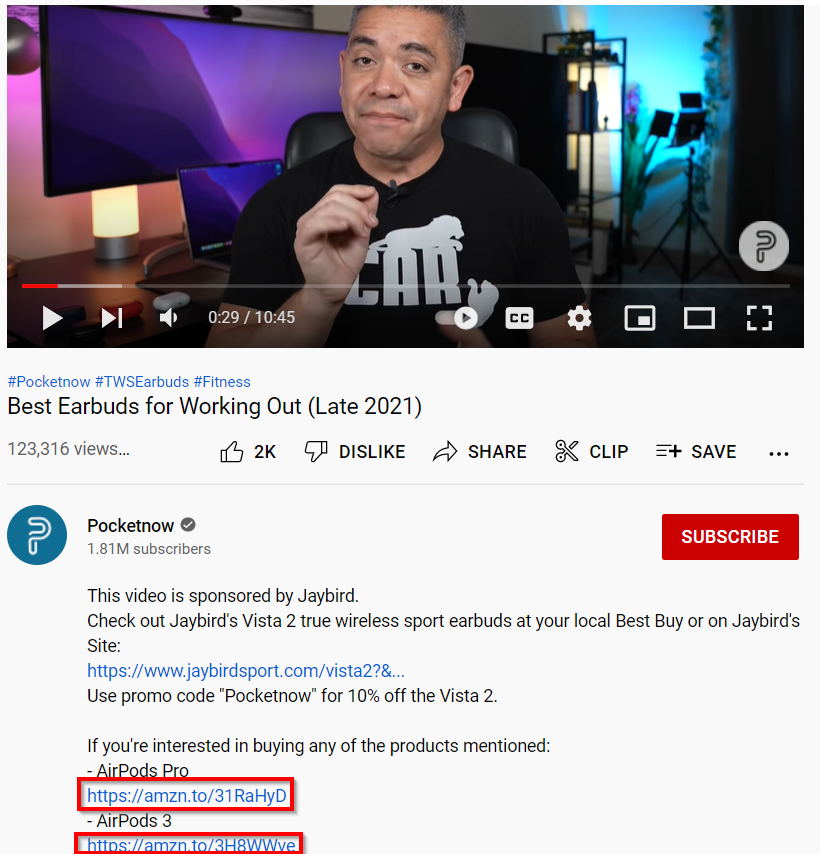
The video above is a product review of gym earbuds by the tech YouTube channel Pocketnow. If we look at the video description, we will find links to Amazon (via Amazon Associates) for buying these earbuds.
The channel owners hope that people will like one of the headphones in the video, click on the Amazon affiliate link and buy it. If it is successful, Amazon will pay Pocketnow for referring a customer.
With the definition of affiliate marketing clear to us, let’s now break down the process behind it.
How Does Affiliate Marketing Work?
The process of promoting products via affiliate marketing is actually quite simple.
Here are the main steps that brands and creators involved in affiliate marketing usually take:
- Brands create an affiliate program listing the products they want to sell, the payout model (e.g. pay for a click, lead, or purchase), and the commission prices.
- Creators sign up for the affiliate program, select the products they want to promote, and receive unique affiliate (referral) links.
- Creators make their content (e.g., blog posts or YouTube videos) where they promote the product and place the affiliate link.
- Blog readers or video viewers click on the affiliate link and go to the brand’s website where they buy the product.
- The brand uses the unique link to identify the name of the creator that had referred the paying customer and pay that creator a commission. If the brand is big and well-known, it can also assign a personal assistant to each affiliate to help them with any questions or concerns.
If you are wondering what an affiliate program looks like, here’s an example from a SaaS product.
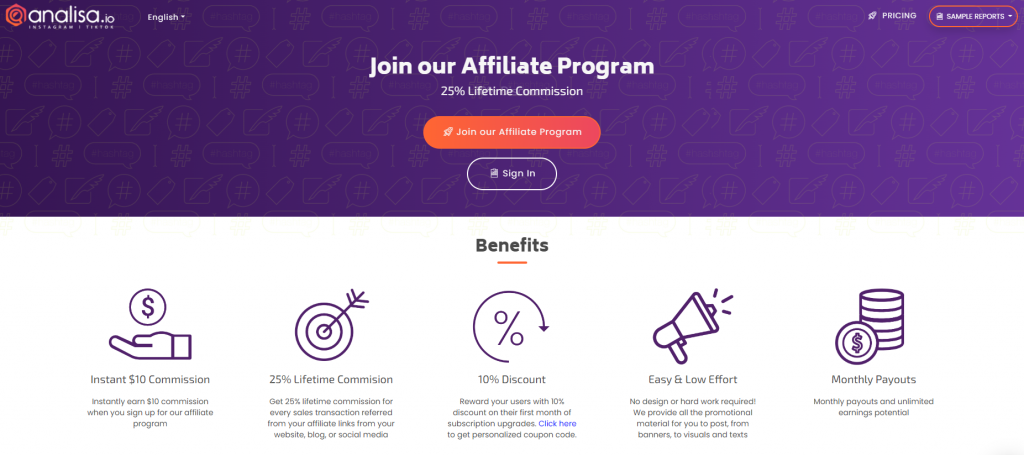
Analisa is an Instagram and TikTok analytics tool supplying marketers with campaign reports, historical data, influencer mapping, and other helpful information necessary for a successful social media strategy. .
Analisa affiliate program offers the following perks to everyone interested in promoting its product:
- Instant $10 commission.
- 25% lifetime commission.
- Monthly payouts.
- 10% product discount and personalized coupons.
So, running such a program is a win-win for Analisa and its affiliates. The brand gets high-quality relevant leads, while the affiliates have a chance to earn extra cash.
As we have a general idea of how this marketing approach works, let’s move on to exploring the different types of affiliate marketing.
3 Types of Affiliate Marketing to Consider
People get into affiliate marketing for different reasons.
One notable group that likes affiliate marketing includes established influencers or blog owners who seek an extra method of monetization. Another group is digital marketers who do not possess any organic traffic or followers and rely solely on paid advertising to sell the products and earn affiliate commissions.
Depending on the background and goals of people who take part in affiliate programs, the way they promote products can be different too.
In general, there are three common ways of doing affiliate marketing, and we will explain each one next.
Type #1: Unattached affiliate marketing
The term unattached might give you a clue of what this type of affiliate marketing is about. When someone is doing unattached affiliate marketing, it means that they do not have any expertise or experience in any niche, inducing the niche of the product you are promoting.
There are two common groups of people who do unattached affiliate marketing.
First Group: Influencers, bloggers, and others who have organic traffic and followers but are promoting products unrelated to their area of expertise.
This approach is common for very small blogs, review sites, entrepreneurs with small businesses (e.g., built on WordPress), and channels new to digital marketing. Usually, after gaining some experience in marketing, these sites and channels quickly realize the value of promoting products relevant to their niche and abandon their unattached affiliate marketing practices.
Second Group: Digital marketers with affiliate websites who act as middlemen between affiliate programs and potential customers.
As already mentioned in the introduction, these people do not own a website with organic traffic or a social media channel with followers. Most of the time, they simply register for affiliate programs, pick up the affiliate links and place them on social media (we have its prices covered in our SMM costs guide) or search engine ads, banner ads, or the landing pages they have built.
They hope to earn more affiliate commissions than what they spend on running ads.
Now let’s understand what the main benefit and the downside of unattached affiliate marketing is.
The Benefit of Unattached Affiliate Marketing: It is the easiest one among the three types of affiliate marketing presented in this guide.
Unlike the other two, unattached affiliate marketers do not need to spend time and resources to build a relevant audience who has trust in them. All they need to do is register for the affiliate program and start promoting.
The Downside of Unattached Affiliate Marketing: You are facing the risk of promoting products that are not relevant to your audience.
Either your audience does not need what you are advertising, or they do not trust you enough to listen to your opinion and buy it.
Type #2: Related affiliate marketing
Unlike the unattached affiliate marketing method described above, doing this one means that the products (both digital and physical) you promote are related to the content you have in your blog or channel.
Although, in this case, you do not share your personal experience with the product, you are still presenting your audience with something relevant to their interests and needs.
For this type of affiliate marketing, you cannot pick affiliate programs and run PPC (pay-per-click) campaigns. You need to either have a website with organic traffic or a social media channel with followers. And in both cases, you need to have quality content (e.g., tutorials, reviews for new products, webinars, podcasts, and other content marketing deliverables) related to some niche, as related affiliate marketing is about promoting niche-specific products.
Now let’s see what related affiliate marketing looks like in practice with an example by tech YouTubers.
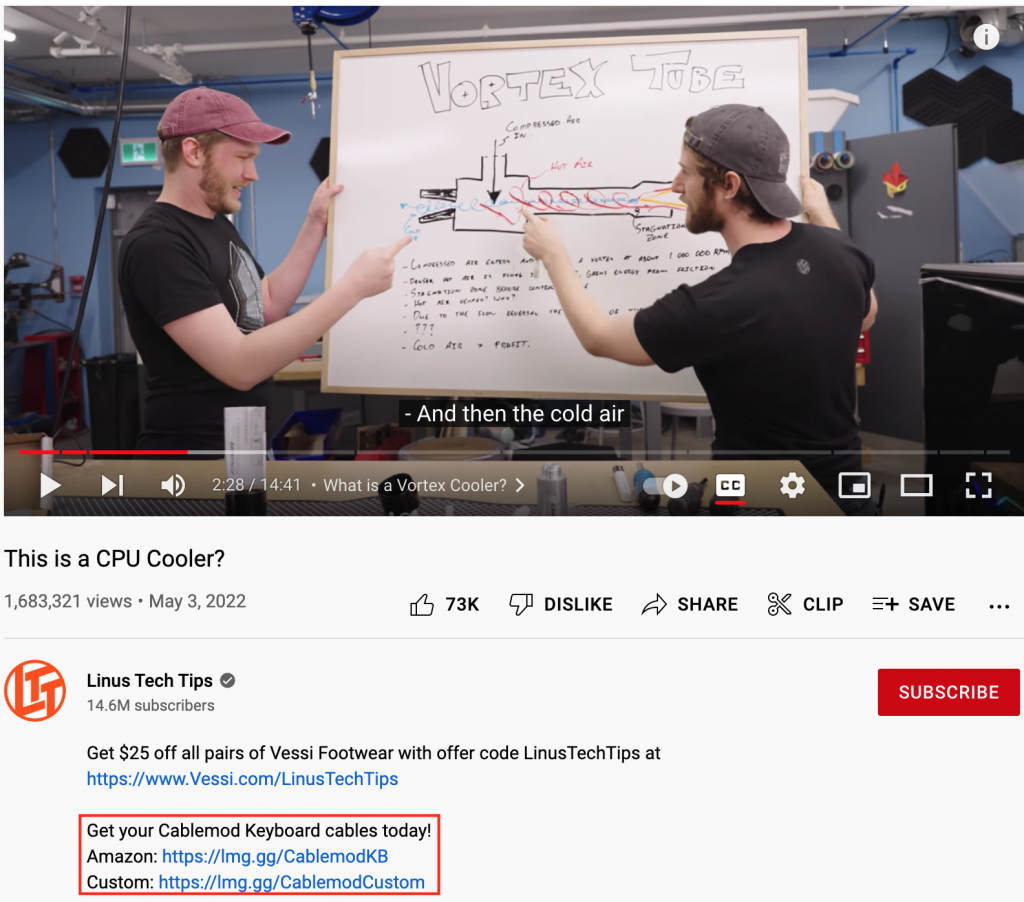
Linus Tech Tips is a popular PC-building channel with 14.6 million followers owned by Canadian influencer Linus Sebastian.
The channel covers everything related to building PC computers, from selecting the right components to setting up software and tweaking PC configurations. They also have a series of educational videos that explain how certain parts of personal computers work, including our example that speaks about coolers.
In the video description, we can see two affiliate links for buying keyboard cables produced by Cablemod.
Although Linus Tech Tips does not directly use these cables in their videos, they are still related to their niche – PC building. It means that the audience of this channel is likely to be building computers and looking for keyboard cables to buy.
The followers of this channel also trust the recommendations of Linus about keyboard cables, as he is a professional in building computers.
Type #3: Involved affiliate marketing
The name for our final type of affiliate marketing speaks for itself too. Involved affiliate marketing is the case when creators and bloggers personally use the products offered in the affiliate program before they go ahead with promoting them.
Just like with related affiliate marketing, the creators who do involved affiliate marketing also prefer picking products that fit their niche and are relevant to the needs of their followers.
The most common way of doing promotion, in this case, is by making review videos (e.g., WireCutter of New York Times) or posts or by sharing personal experience of using the products.
To better illustrate this type of affiliate marketing, let’s take a look at a real-world example.
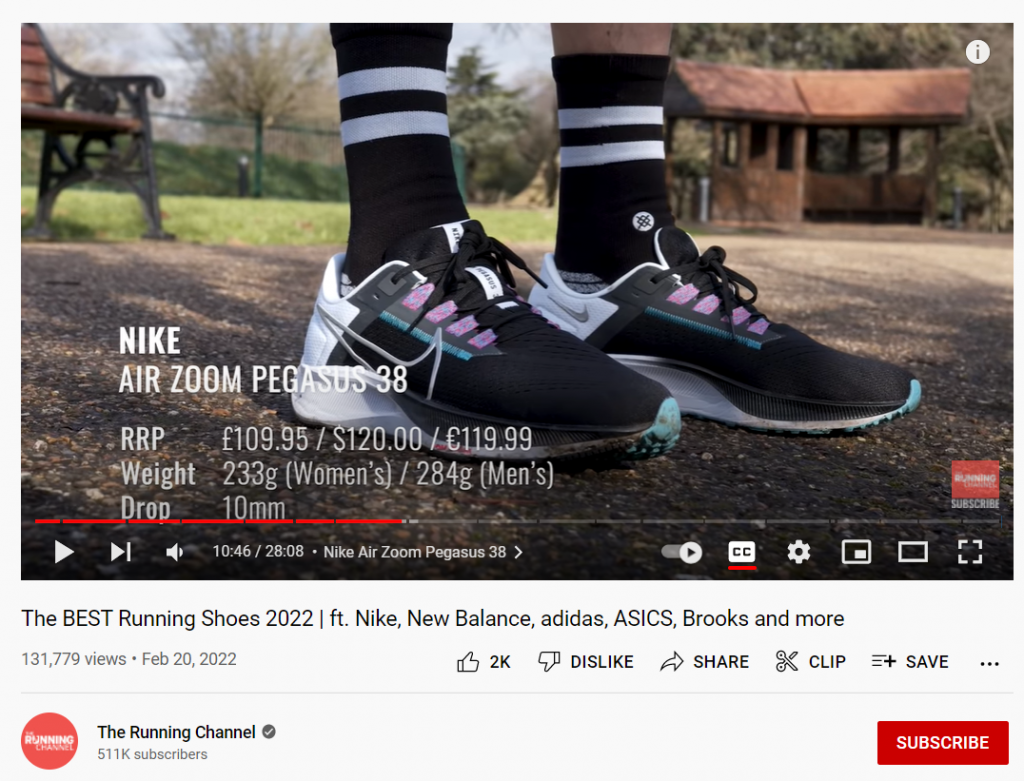
Here we have “The Running Channel” with more than 500,000 subscribers.
As the authors claim in their description, the content here is created by runners, for runners, covering topics such as:
- Running how-to videos.
- Tips and tricks for 5K, 10K, and half-marathon runs.
- Workout routines, and more.
The channel also showcases physical products related to their niche, and our example video is one of them – presenting the list of running shoes that the channel authors consider the best.
The hosts in this video share their personal experiences of using these shoes, reviewing their grip, level of comfort, and other parameters.
To conclude, you can do affiliate marketing even if you don’t have an audience, but the effectiveness will be vastly lower than the affiliate marketing campaigns of influencers who operate in a niche relevant to the product and share their personal experience of using these products.
Now let’s have a look at the benefits of doing affiliate marketing.
5 Benefits of Affiliate Marketing
Affiliate marketing is a highly effective way of increasing sales for brands as it is the best-performing channel for acquiring customers for 40% of eCommerce stores in the U.S.
Other than being a great acquisition channel for brands, affiliate marketing is also a lucrative option for bloggers and creators to monetize their following, as they could earn anywhere between $10,000 – $150,00 per year, depending on their performance.
Now let’s see what the other major advantages of affiliate marketing are.
Benefit #1: Low start-up costs
Affiliate marketing is known as a relatively easy marketing channel to get started with. One of the main factors for that is the near absence of startup costs.
Let’s look at the cost structure from the point of view of both main parties involved in affiliate marketing․
When you are a Digital Marketer or Brand: To get started with affiliate marketing, you will need to set up an affiliate program and reach out to creators, bloggers, and influencers who will sign up for your program and promote your products.
The good news is that there are plenty of affordable SaaS solutions (e.g. Birdeye, Influitive, and PartnerStack) out there that let you։
- Set up and manage affiliate programs.
- Make commission payments.
- Find, reach out, and manage relationships with influencers.
Thus, all it takes to start an affiliate program is to buy a specialized tool and set aside the resources to manage it.
When you are a Content Creator or Website Owner: Jumping into affiliate marketing is quite simple for you, too. All you need to do is find an affiliate program, select the products you want to promote, copy your affiliate links, and insert them naturally into your content.
Essentially, you do not need to spend any money to start doing affiliate marketing.
Benefit #2: Low ongoing costs
With the start-up costs clear, let’s look at the maintenance costs of affiliate marketing.
Again, we will look at it from the viewpoint of both brands and creators.
When you are a Digital Marketer or Brand: Managing affiliate programs is relatively cost-effective.
Thanks to the specialized tools we mentioned in the previous point, affiliate programs take very little of your marketing team’s time and resources as these tools automatically manage the majority of tasks related to affiliate marketing.
The only real maintenance costs you incur as an online business are the commission payouts to your affiliates, and they do not usually break the bank for you either.
When you are a Content Creator or Website Owner: As a creator, you have two types of ongoing costs, too – any extra time and resources you dedicate to affiliate marketing and the extra money you spend on tools, equipment, etc.
In terms of extra time spent, there is no considerable increase for you, as you will be making your regular content with slight changes to make sure that the products you promote are naturally incorporated into it.
The good news is that you will not need any specialized tools and equipment for affiliate marketing either. The affiliate programs you sign up for are all free, and unless you plan to bring additional traffic to your website with PPC ads or SEO, you will not spend any extra money on promotions either.
Benefit #3: Flexibility
Another significant benefit of affiliate marketing is all the freedoms and flexibility you can enjoy.
The payment and pricing model in affiliate marketing is pay-per-result (CPA, CPC, and others that we will discuss later on). It means that:
- Brands that own the Affiliate Program do not have any contractual obligations towards affiliates and do not need to pay anything upfront. Brands make commission payments only when affiliates fulfill the acquisition, click, or other commitments – making everything fair and flexible.
- Creators and Bloggers do not risk getting underpaid or missing affiliate sales goals or deadlines. Creators are paid for their actual results, which means that they have the freedom to decide how much effort they want to put into affiliate programs.
But the freedoms of affiliate marketing are not limited only to finances. As creators, you are also enjoying the following privileges.
Deciding on the style of your content: Affiliate programs usually have very few rules and requests when it comes to promoting their products.
It means that you have the complete freedom to decide how exactly you want to promote them. You are also able to retain the unique style of your content and incorporate the products in it the way you want.
Deciding on the partnerships: Affiliate programs rarely ask for exclusivity – the requirement to promote only their products. In reality, they are ok with you partnering up with others, too, as talking about multiple brands in content increases the authenticity of these recommendations.
Thus, as a creator, you have the freedom of choosing how many affiliate programs you want to be part of and which brands you want to promote.
Benefit #4: High ROI
Among other benefits of affiliate marketing, probably the one responsible for its popularity the most is its ability to generate a significant return on investment.
In fact, based on UK data, a successful affiliate marketing campaign’s ROI is approximately 15x, as for every pound spent, British brands have generated 15 pounds of revenue.
The main reason behind the financial effectiveness of affiliate marketing is its ability to reach target audiences with relevant content and product offers. Both brands and creators are naturally prone to promoting products that the audience needs as it is a beneficial strategy for both of them.
For creators, the strategy is about maintaining the trust and the engagement of their audience. If they promote unrelated products (e.g., a snowboarding channel speaking about PC coolers), they risk hurting their reputation and trust. But, on the contrary, if the same snowboarding channel starts reviewing winter boots, it will be something that their audience will enjoy.
For brands, it is about reaching the right target audience and making sure that the products they offer match the needs and interests of the blog readers and channel subscribers. If done right, brands will be able to significantly increase their conversion rate, ROI, and sales revenue.
But keeping a high level of relevance is not the only reason affiliate marketing ROI is high. There is also the fact that blog readers and channel subscribers are very likely to make a purchase after seeing the creator’s recommendation (for around 80% of cases, influencer recommendation has resulted in a purchase).
Benefit #5: More Quality Traffic
The final benefit of affiliate marketing that we want to point out is the high-quality traffic. Specifically, we are speaking about the traffic that enters your brand’s website or eCommerce store.
As mentioned in the previous benefits, affiliate marketing is a game of quality over quantity, thanks to its remarkable ability to reach target audiences and promote relevant products.
Thus, when partnering up with affiliate marketers and content creators, you are increasing the chances that the people who visit your website will be those who are genuinely interested in your products.
And more quality traffic will also mean higher conversion rates and more funds contributed to the bottom line of your company.
To sum up, affiliate marketing is a beneficial tactic for both increasing your company’s product sales and monetizing your traffic and followers. Thanks to low costs and precise targeting, it can help you generate sizable ROI and quality traffic for your website.
Now it is time to understand how to make the most out of your affiliate marketing efforts.
5 Tips for Affiliate Marketing Success
As we saw in our previous section, it is a great idea to get into affiliate marketing. But the catch is that you can only expect to benefit from all the benefits we have listed if you are doing affiliate marketing right.
To help you with this, we have compiled a list of 5 tips that will help you get everything right in your affiliate marketing efforts.
Tip #1: Set a strategy
No marketing effort is effective or meaningful if it does not have a strategy and goals, and having a clear plan is essential for doing affiliate marketing too.
To make an affiliate marketing strategy, here is what you need to consider:
- Business Goals: What exactly is it that your company wants to achieve? Do you want more sales or better brand awareness? Your affiliate marketing efforts will differ based on your business goals. For example, if you seek more sales, you might consider paying commissions per purchase. On the other hand, if you want to increase your brand awareness, paying commissions per click might be a better option for you.
- Targeting: Who is your target audience? What are the needs that your products are covering? Again, different audiences will need different affiliate marketing approaches. For instance, if your products are for a younger audience, you might consider working with TikTok influencers. If you want to target boomers, then Facebook influencers might be the better choice.
- Unique Value Proposition: How does your product stand out from your competition? When you have a clearly defined unique value proposition, your partner creators can use that in their content to increase the effectiveness of your affiliate marketing campaigns.
Finally, you will also need to decide on the structure of your affiliate program, which includes the payout model, commission size, payout schedules, and other administrative details.
Tip #2: Build an email list
This tip is more relevant for affiliate marketers who actively experiment with traffic sources to see which one generates the most clicks on affiliate links.
In that regard, email is a great channel because:
- Email is alive and doing well, as there are more than 4 billion people using email daily.
- The average click-through rate for marketing emails is 11.3%.
- When compared to social media and other channels (we have a piece on that comparison, too), the conversion rate of emails is the highest at 66%.
Another reason that speaks in favor of using email for affiliate marketing is the fact that the people who have subscribed to you are interested in your emails and will likely open and click on the affiliate links you send to them (assuming that you are sending relevant offers to them).
Some of the common types of email content that you can send to your subscribers include:
- Downloadable goodies, such as useful templates, guides, etc.
- Reports, analyses, and whitepapers (these are more relevant to the B2B market).
- Updates and news.
- Entertainment and stories.
- Deals and offers.
- Loyalty programs.
Here is what a typical email with affiliate links looks like.

Email marketing is, of course, great, but you need to be careful with the frequency and types of content you are sending. You definitely do not want to be spammy and break the CAN-SPAM rules.
Tip #3: Find relevant creators
If you want your target audience to see your product promotions, it is crucial to find and collaborate with the right creators.
When selecting creators, there are two important factors that you should consider:
- Creator niche or its absence: You definitely want to check the niche your potential partner creator is operating in and understand if their followers will be interested in your products. Sometimes you can decide to collaborate with creators who do not have a niche too. It is usually when the creator is a celebrity with a massive audience, and you are seeking to increase your brand awareness.
- Size of the creator: You also need to decide if you want to focus on small blogs and nano-influencers or the larger ones. The main factor here is the prices (large influencers might demand better commissions) and the number of creators you need to be working with at the same time (e.g., reaching a 1 million audience will mean working with 100 small creators or a single large one).
In terms of finding creators, you can either take advantage of existing SaaS services or do it manually yourself.
If you have decided to find creators manually, your first step will be to perform keyword research and understand what your potential customers would search for. Afterward, you can search Google or social media sites using your target keywords and look for blogs or social media channels that operate in the niche of your interest.
Another approach is to simply search for influencer channel lists with keywords such as “best automotive blogs”.
Below is an example of the “best instagram makeup channels” search result.
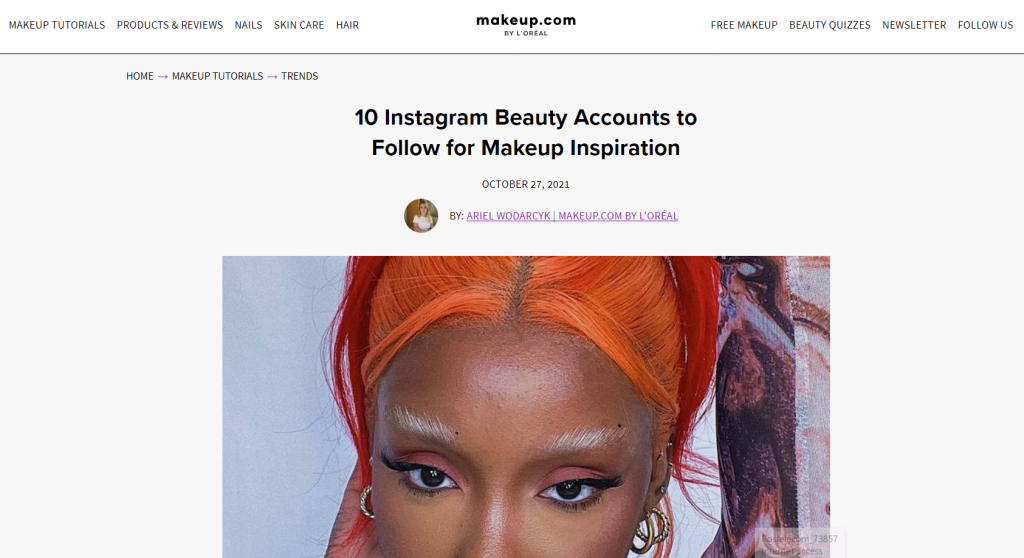
The article here lists ten prominent Instagram accounts that post content about makeup that you can reach out to and offer affiliate partnerships.
Tip #4: Monitor the right metrics
Getting your tracking and monitoring right is another vital job you need to do for the success of your affiliate marketing campaigns.
If you are able to define the right KPIs and constantly track them, you will be able to:
- Identify strategies or content that perform well and focus on them.
- Find the underdog strategies and improve them or get rid of them.
- Forecast your performance and sales/revenue for your business planning.
Tracking KPIs is equally important both for the brands and the creators.
As a brand, you will need to constantly gather and monitor information, such as:
- Overall revenue from affiliate programs.
- The overall cost of your affiliate programs.
- The difference between the two above, which is your indicator that your affiliate activities are profitable.
- Performance metrics (we will cover that in detail in our next section) for each affiliate.
As a creator, some of your key metrics would be:
- Overall traffic, view count, or subscriber count.
- Traffic or view count per blog post or video/image.
- The number of clicks, CTR, conversion rate, and other performance metrics of your affiliate links. Again, we will cover these in our next section.
Now let’s understand which tools you will need for tracking these metrics.
If you have a social media channel, then you can use the analytics dashboard of your social media platform (e.g., Facebook has Audience Insights).
Affiliate programs also have their own dashboards. Brands create and manage their affiliate programs by using special SaaS services, and these services also provide analytics dashboards for the creators/affiliates who sign up for the brands’ programs.
Here’s an example dashboard in affiliate program management service Tapfiliate.
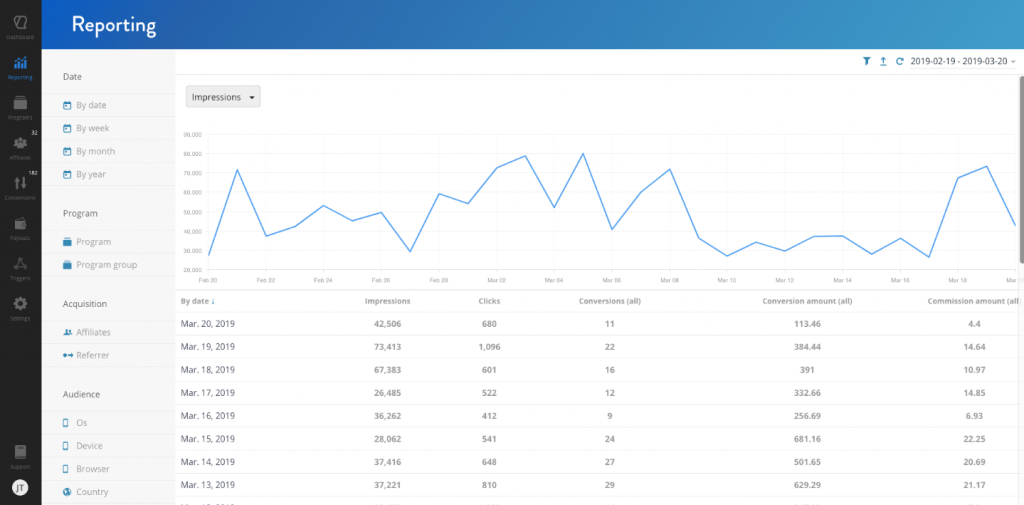
The dashboard here gives you daily performance data on your impressions, clicks, conversions, etc.
Tip #5: Diversify partners
Our final tip is about portfolio diversification. Again, it applies to both sides – companies and creators.
Here’s how each one can benefit from diversifying their partnerships:
- Brands can access more diverse audiences and have less chance of audience overlap with the influencers they are working with.
- Creators can increase the chances that people will convert by showcasing multiple products instead of one.
In conclusion, affiliate marketing is a high-ROI channel, but you need to know how to do it right, including your strategy, monitoring, and partnerships.
With the affiliate marketing tips behind us, let us help you with the terminology too.
10 Affiliate Marketing Terms You Need to Know
At first glance, the terms used in affiliate marketing might seem a bit confusing. But we assure you that they are not as hard as they might seem.
Our list here is a collection of the most common terms you might encounter when working with affiliate programs, both as a creator and a brand.
Term #1: CPA
The term CPA stands for Cost Per Acquisition. In the world of affiliate marketing, it is both a commission payment model and a KPI.
As a KPI, Cost Per Acquisition is the amount of money you are spending to acquire a single customer. You can calculate it using this formula:
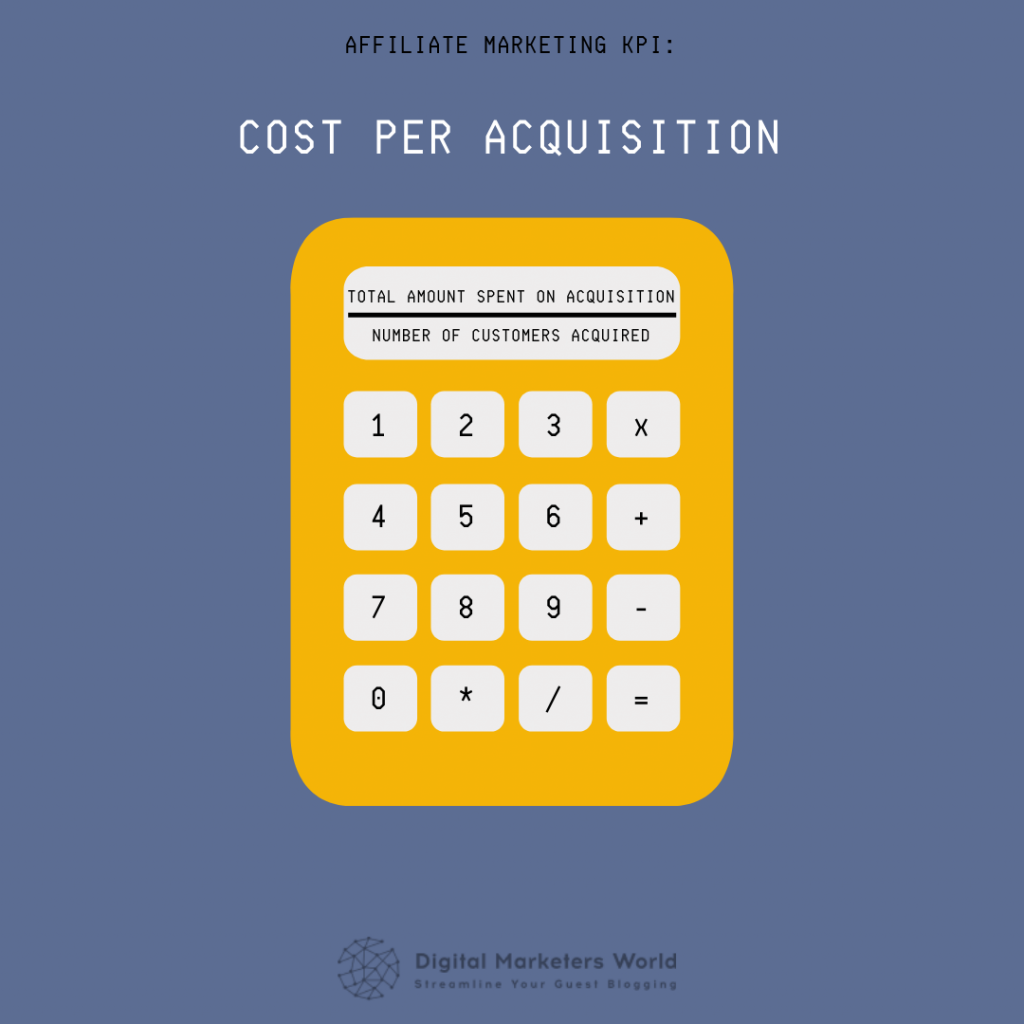
As a commission payment model, CPA refers to the case when brands pay commissions when the customer (that the affiliate had referred to the brand’s website) makes a purchase.
Term #2: CPC
CPC is the abbreviation of Cost Per Click.
Just like CPA, it is also both a metric and a payout model in affiliate marketing.
As a metric, CPC is the cost you incur for generating each click on affiliate links. The formula is:
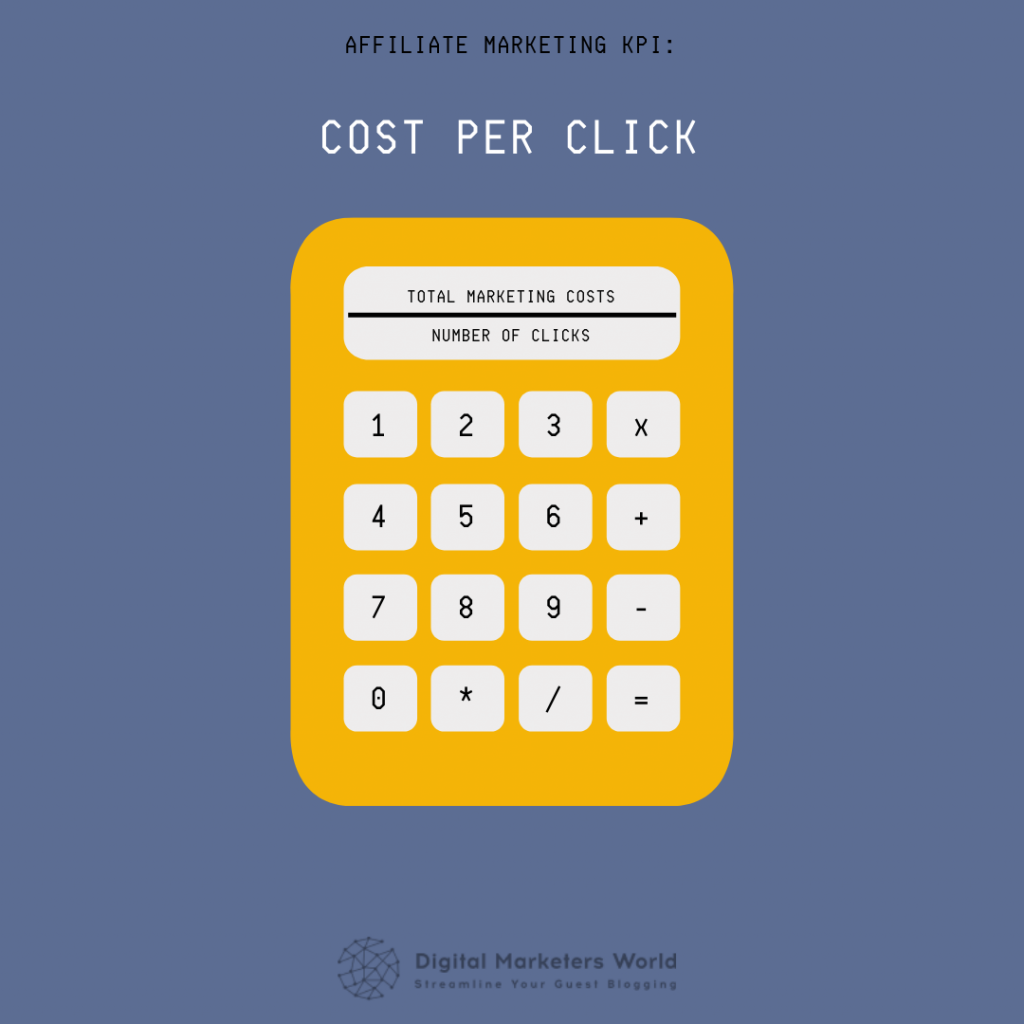
As a payout model, CPC is the case when affiliates get commissions every time their viewers click on their affiliate links.
Term#3: CPO
The full name of this term is Cost Per Order.
It is an alternative to Cost Per Acquisition, as you are calculating the amount you spend on marketing to get a single order. The only difference is that with CPO, you only count those who made a purchase, while with CPA, an acquisition can also be something free, like a trial sign-up.
This metric is more commonly used in the affiliate programs of eCommerce stores.
Term #4: Conversion rate
This metric is quite a valuable one to track and optimize for.
Conversion rate tells you what part of your traffic actually reaches your goals. The goals, in this case, can be an order, a sign-up, or a subscription.
To calculate the conversion rate, marketers use this equation:
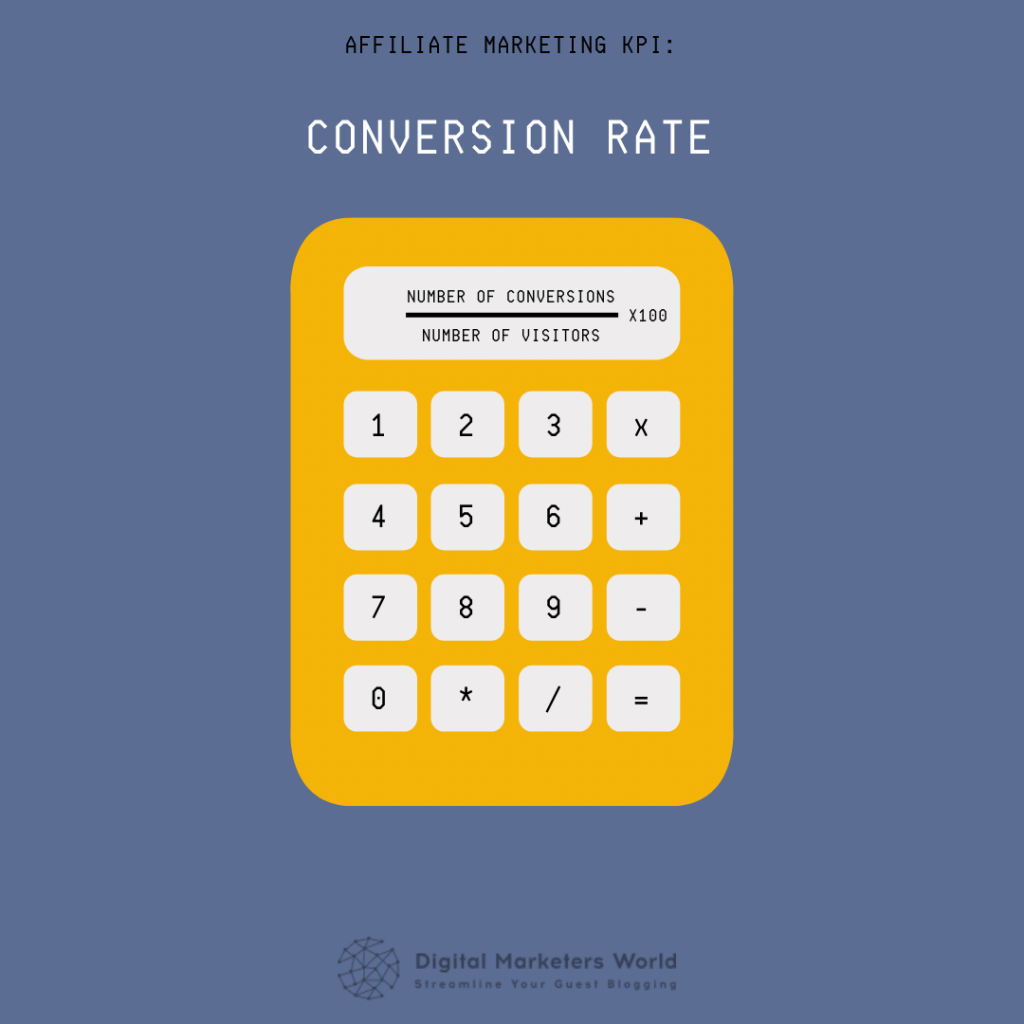
In the reality of affiliate marketing, you will calculate the conversion from the traffic that came from affiliate partners. Thus, your number of visitors will be equal to the total number of affiliate link clicks.
Term #5: EPC
EPC or Earnings Per Click is a metric for the creators and affiliates.
It represents the average amount of affiliate income per click on your affiliate links.
You can get your conversion rate using this equation:
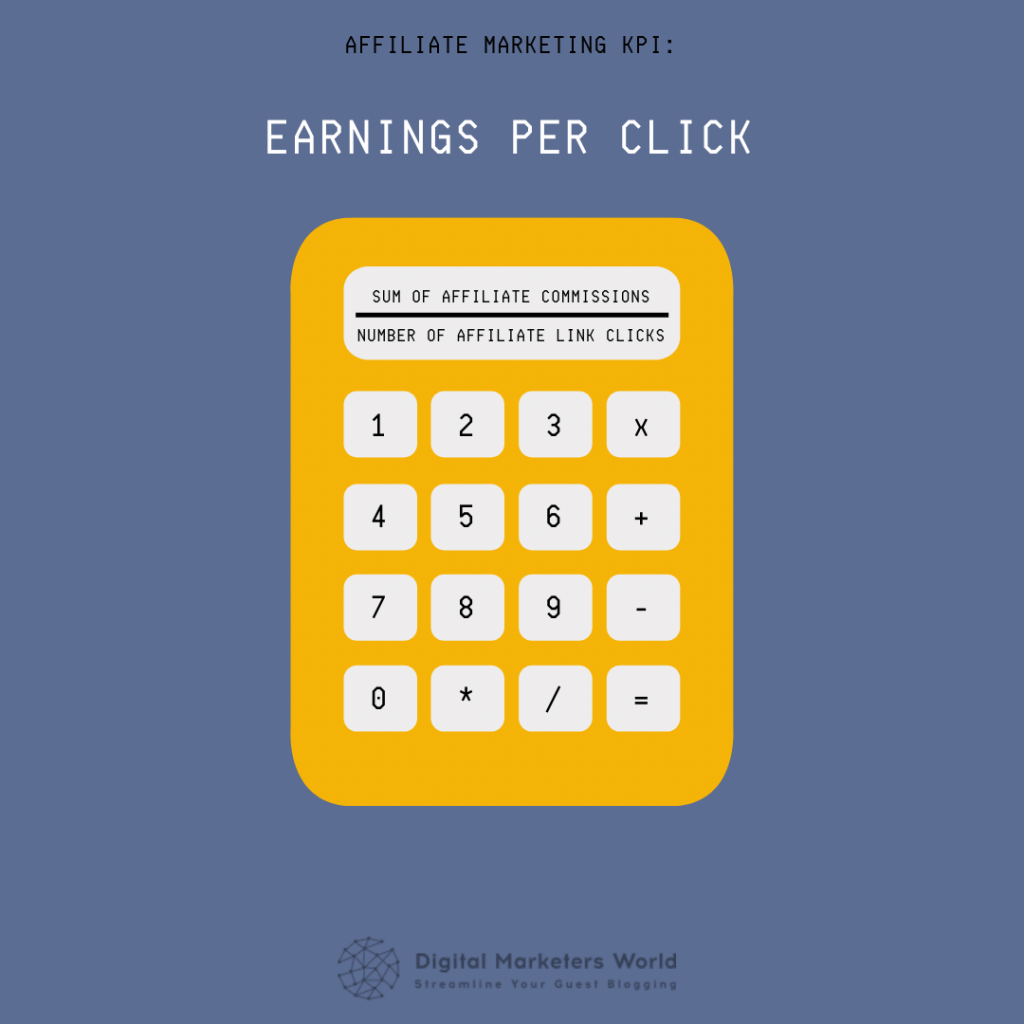
When your EPC is growing, it means that more of your subscribers and visitors make a purchase after clicking on your affiliate links and going to the brand’s website.
Term #6: EPI
It stands for enhanced publisher information. It is a system that allows you to create custom parameters, add them to your affiliate links and pass them to affiliate platforms.
Affiliate marketers use EPI for custom analytics purposes, such as tracking the links of specific teams (used in team performance measurement) or click_ids of other analytics tools, letting them keep track of affiliate link performance in multiple tools at the same time.
Term #7: PPC
PPC stands for Pay-Per-Click.
It is a model of online advertising when you are paying to the ad platform each time people click on your ads and visit your website.
In the context of affiliate marketing, PPC refers to the cases when affiliate marketers or creators use paid advertising to attract more traffic to the affiliate site or channel where they have placed their links.
Term #8: UTL
The full name for this term is Unique Tracking Link.
As a creator, when you are registering for an affiliate program and selecting a product to promote, the affiliate platform generates a link that includes two unique IDs:
- Your unique ID letting the brand know that the visitor came from your blog/channel.
- Affiliate product unique ID that tells the brand which product you were promoting.
Brands use Unique Tracking Links to track your conversions and calculate your commissions.
Term #9: CPL
The CPL or Cost Per Lead is another term that is both a KPI and an affiliate payout model.
As a KPI, it is the amount of marketing expenses that you have made to get a single lead (either MQL or SQL). You calculate it this way:
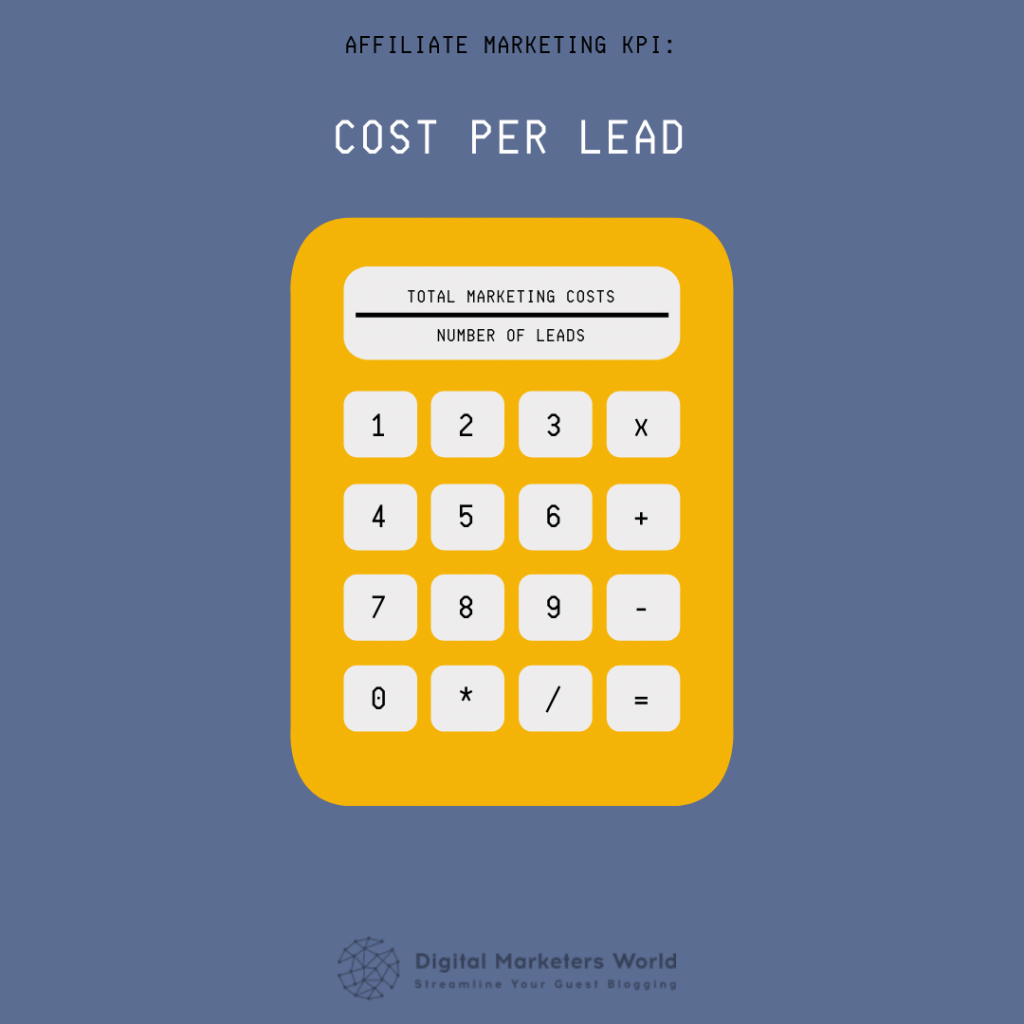
As a payout model, creators get a commission when the person they have referred becomes a lead for the brand.
Term #10: ROI
ROI (Return on Investment) is probably among the most important metrics you should be tracking.
It shows the effectiveness of your marketing activities, as it is the difference between the investments and costs you have put into a specific marketing channel and the benefits (e.g., sales revenue) that campaign has brought you.
The formula for ROI is quite straightforward:
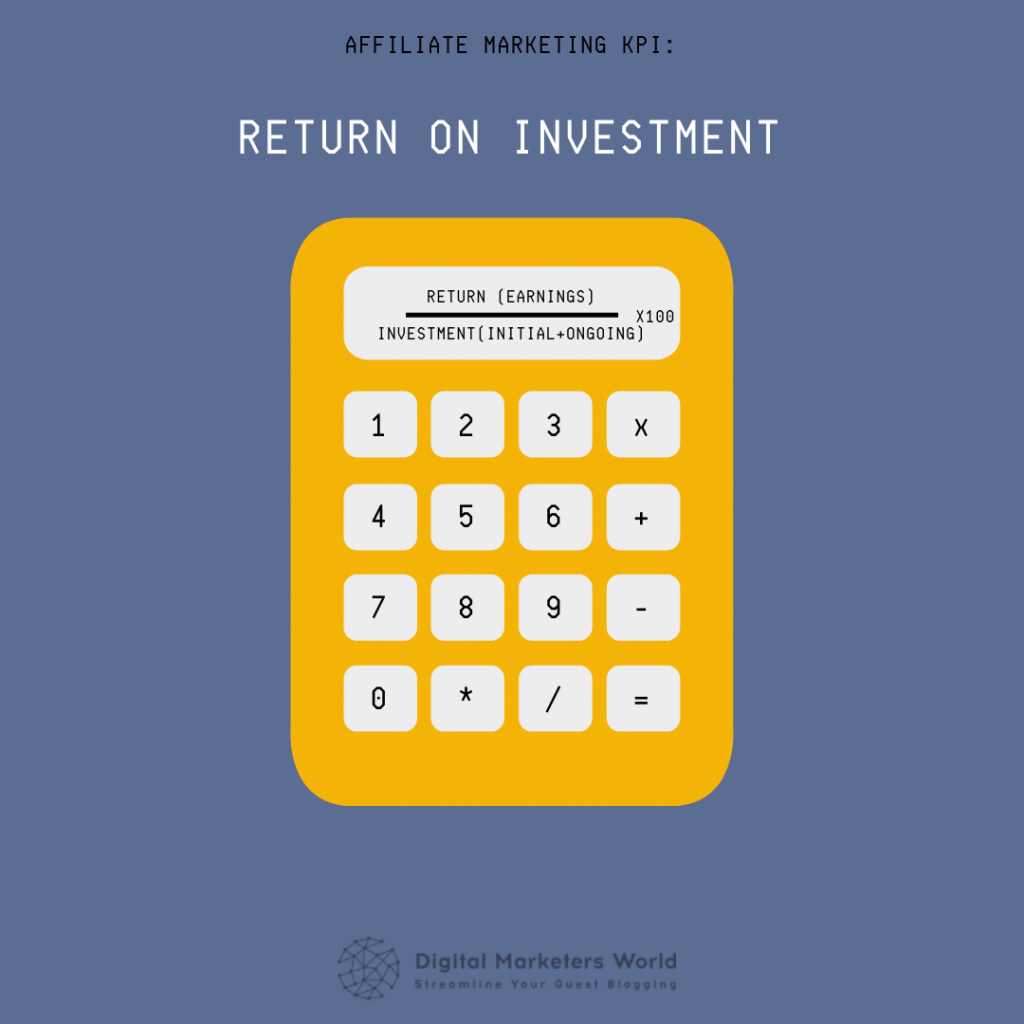
To conclude, there are many terms and abbreviations that you will encounter when getting started with affiliate marketing, and we hope that we have covered most of them for you here.
Over to You
Thanks to its precise targeting, low costs, high returns, and low risk, affiliate marketing has become a channel that everyone loves. We hope that our guide gave you everything you need to get started with this channel.
This guide is part of a series about affiliate marketing, you can also check out our guide on YouTube affiliate marketing and the cost/benefit analysis of this channel.
We love marketing and have lots of interesting content about it in our blog. Go check them out!
Frequently Asked Questions (FAQs)
Q1. What are the pros and cons of affiliate marketing?
The pros of affiliate marketing include its cost-effectiveness, high return, and ease of execution. Regarding the cons, you will need lots of patience to start earning commissions, and the commission rates might not be as high as you wanted.
Q2. What is the difference between affiliate marketing and affiliate networks?
The difference between affiliate marketing and affiliate networks is that affiliate marketing is a promotional model where companies pay commissions to affiliates who promote their products, while affiliate networks (e.g., ClickBank or Commission Junction) are the marketing platforms where these companies and affiliates meet.
Q3. Is affiliate marketing easy?
Starting an affiliate marketing campaign is relatively easy, but it takes patience and experience to get everything right and earn a sizable income from the affiliate marketing business.
Q4. How do I start affiliate marketing as a beginner?
To start doing affiliate marketing, you can follow these steps:
- Decide on the affiliate niche you will operate in.
- Sign up for affiliate programs and select the products to promote.
- Build an audience and promote these products to them naturally.
Make sure that you are also following the laws and regulations for advertising.
Q5. What exactly does an affiliate marketer do?
An affiliate marketer is an online marketing professional who acts as a middleman between the brands and creators interested in affiliate marketing. Affiliate marketers match these two and earn commissions from the process.

Sona Kalantaryan is a senior digital marketer with a creative past. Big fan of high cinema and well-optimized landing pages. She authors guides by sharing the best practices and does it the right way!
